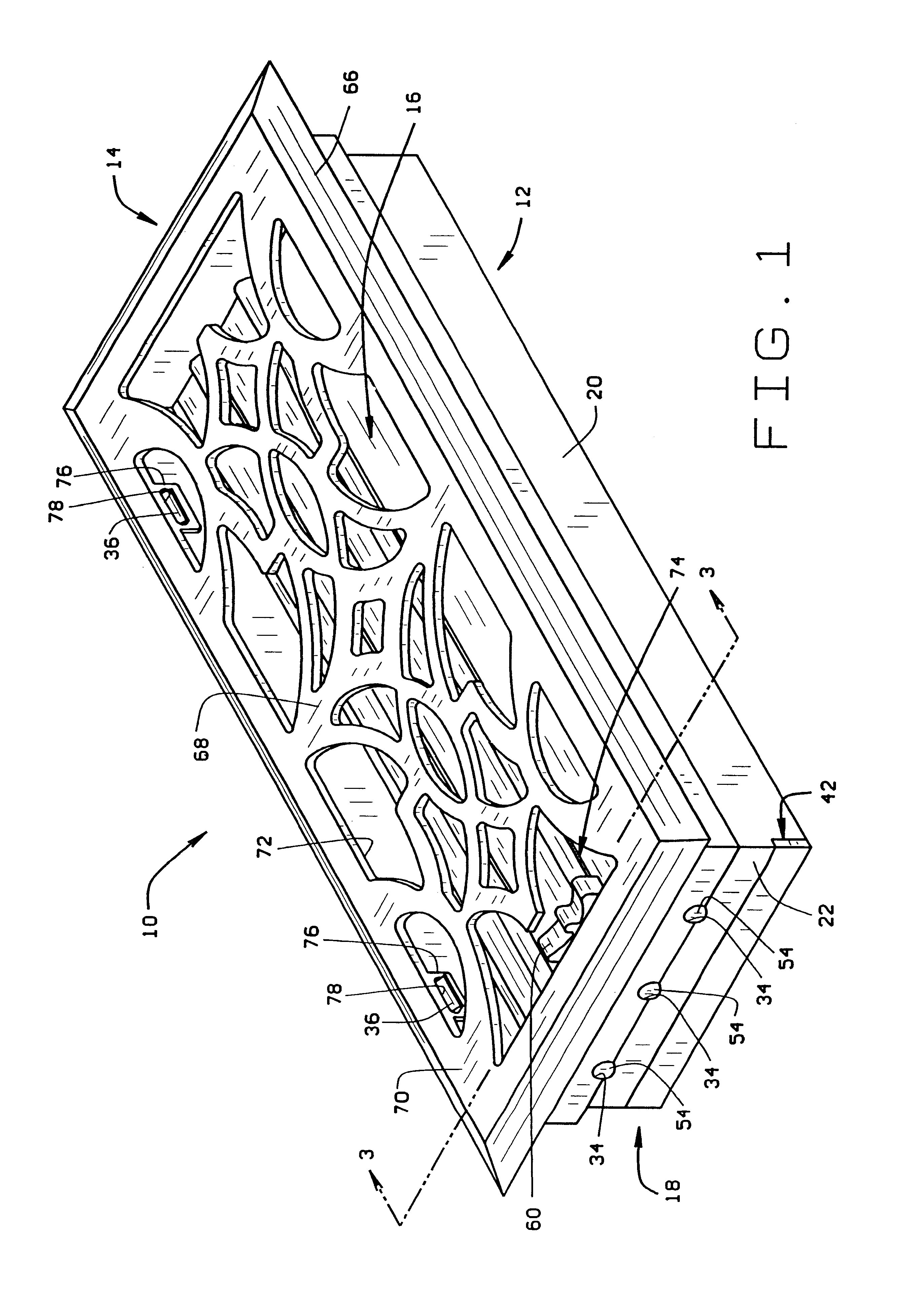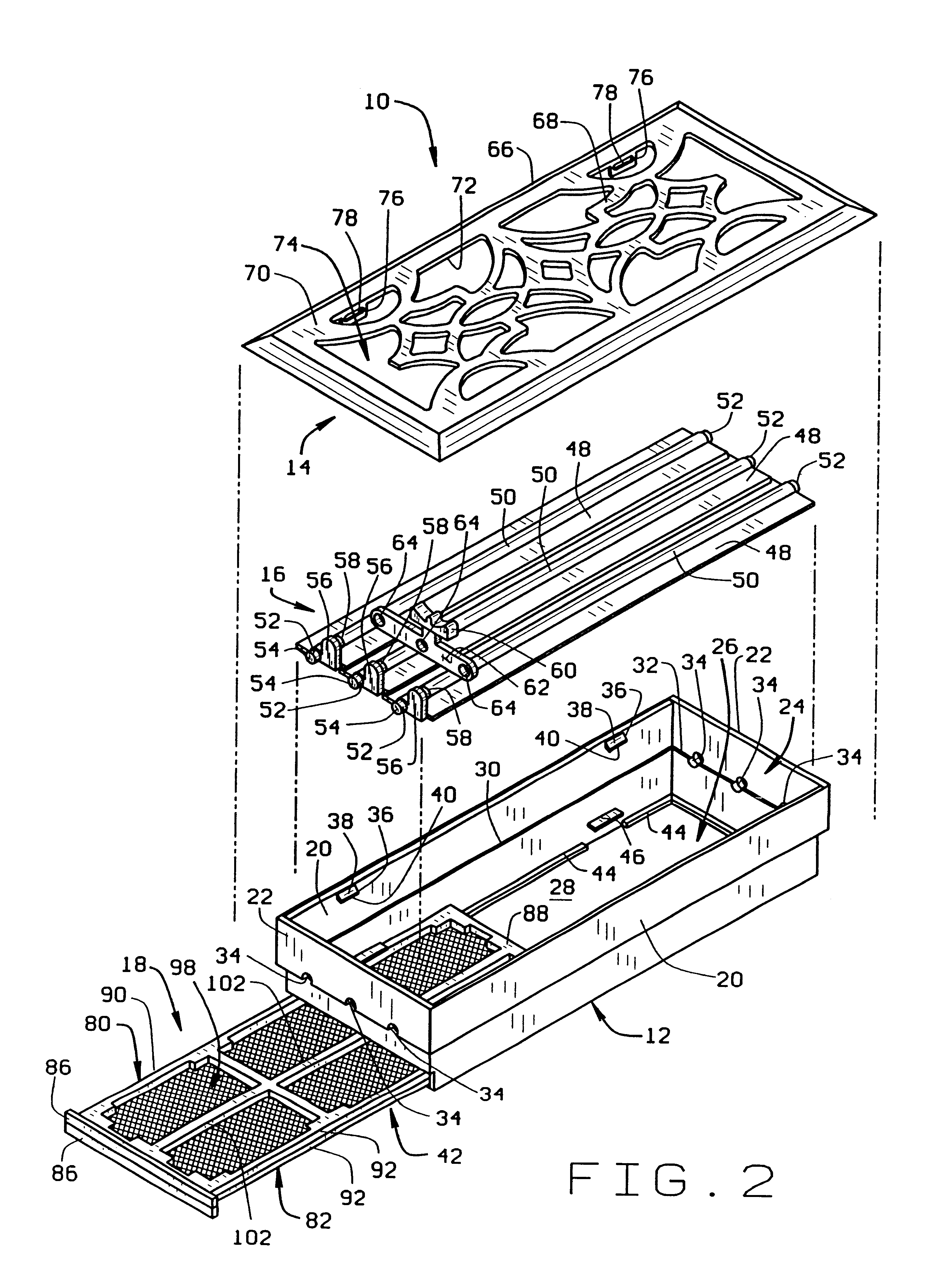Register assembly for covering an air duct opening
a register assembly and air duct technology, applied in ventilation systems, heating types, separation processes, etc., can solve the problems of not being able to stack together for shipping to the manufacturer, not being able to adjust the air flow of many consumers in certain rooms, and not being able to adjust the air flow of many rooms. , to achieve the effect of reducing the overall cost of the register assembly and further reducing the cost of manufacture and purchas
- Summary
- Abstract
- Description
- Claims
- Application Information
AI Technical Summary
Benefits of technology
Problems solved by technology
Method used
Image
Examples
Embodiment Construction
The register assembly of the present invention is shown in its assembled condition in FIG. 1 and shown disassembled in FIG. 2. The register assembly 10 is basically comprised of a base 12, a faceplate 14, a damper mechanism 16, and a filter frame 18. In one preferred embodiment of the invention the base, faceplate, damper mechanism and filter frame are all formed from a semi-rigid plastic. In an alternate embodiment of the invention the faceplate 14 is constructed of wood, ceramic or a metal such as brass. The component parts of the register assembly are equally well-suited for being constructed of other materials. However, the plastic construction of the base, damper mechanism and filter frame significantly reduces the manufacturing cost of these component parts and reduces the register assembly's purchase price to the ultimate consumer.
The base 12 is comprised of a first pair of longitudinally extending sidewalls 20 and a second pair of laterally extending sidewalls 22 that togeth...
PUM
| Property | Measurement | Unit |
|---|---|---|
| thickness | aaaaa | aaaaa |
| distance | aaaaa | aaaaa |
| width | aaaaa | aaaaa |
Abstract
Description
Claims
Application Information
 Login to View More
Login to View More - R&D
- Intellectual Property
- Life Sciences
- Materials
- Tech Scout
- Unparalleled Data Quality
- Higher Quality Content
- 60% Fewer Hallucinations
Browse by: Latest US Patents, China's latest patents, Technical Efficacy Thesaurus, Application Domain, Technology Topic, Popular Technical Reports.
© 2025 PatSnap. All rights reserved.Legal|Privacy policy|Modern Slavery Act Transparency Statement|Sitemap|About US| Contact US: help@patsnap.com



